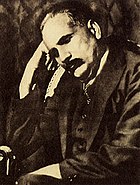My Country Pakistan
Saturday 14 September 2013
Thursday 12 September 2013
Amazing Facts about Pakistan:
1- World's largest irrigation system is in Pakistan. 2- World's largest deep sea port is Gawadar in Pkaistan. 3- Pakistan is a proud owner of tallest cake world record. 4- World's largest milk processing plant with Nestle. 5- Population of Pakistan is larger than Russia , although the land is much smaller. 6- Pakistani armed force s are internationally ranked sixth largest in the world by 2010. 7- India was kicked out from U19 world cup by Pakistan. 8- Pakistan is the only Muslim nuclear power. 9- Sixth nuclear power of the world. 10- Pakistan is ninth super-power nation of the world. 11- Pakistan is notable for having one of the best trained air force pilots in the world. 12-Pakistan has world's youngest civil judge , Muhammad Illyas. 13-Pakistan has seventh largest collection of scientists and engineers. 14- About 50% of the world's footballs are made in Pakistan. 15- Pakistan's national anthem tune ranks first in the top three tunes of the world. 16-Fourth largest broadband internet system of world is in Pakistan. 17-The youngest certified Microsoft technology specialist is a Pakistani who is only 12 yrs old. 18- Second largest salt mines of the world are Khewra Mines in Pakistan. 19- Largest producer of chickpeas. 20- Pakistan has sixth largest population in the world.Wednesday 11 September 2013
Literature

Muhammad Iqbal, Pakistan’s national poet
Main article: Literature of Pakistan
Pakistan has literature in Urdu, Sindhi, Punjabi, Pushto, Baluchi, Persian, English and many other languages.[299] Before the 19th century it consisted mainly of lyric and religious poetry, mystical and folkloric works. During the colonial age, native literary figures influenced by western literary realism took up increasingly varied topics and narrative forms. Prose fiction is now very popular.[300][301]The national poet of Pakistan, Muhammad Iqbal, wrote poetry in Urdu and Persian and is read in Afghanistan, Iran, Indonesia, India and the Arab world. He was a strong proponent of the political and spiritual revival of Islamic civilisation and encouraged Muslims binding all over the world to bring about successful revolution.[302][303][304]
Well-known representatives of contemporary Pakistani Urdu literature include Faiz Ahmed Faiz. Sadequain is known for his calligraphy and paintings.[301] Sufi poets Shah Abdul Latif, Bulleh Shah, Mian Muhammad Bakhsh and Khawaja Farid are very popular in Pakistan.[305] Mirza Kalich Beg has been termed the father of modern Sindhi prose.[306]
Architecture
Main article: Pakistani architecture
Pakistani architecture has four recognised periods: pre-Islamic, Islamic, colonial and post-colonial. With the beginning of the Indus civilisation around the middle of the 3rd millennium BCE,[307] an advanced urban culture developed for the first time in the region, with large buildings, some of which survive to this day.[308] Mohenjo Daro, Harappa and Kot Diji are among the pre-Islamic settlements that are now tourist attractions.[142] The rise of Buddhism and the Persian and Greek
influence led to the development of the Greco-Buddhist style, starting
from the 1st century CE. The high point of this era was reached at the
peak of the Gandhara style. An example of Buddhist architecture is the ruins of the Buddhist monastery Takht-i-Bahi in Khyber Pakhtunkhwa.[309]The arrival of Islam in today's Pakistan meant a sudden end of Buddhist architecture in the area and a smooth transition to the predominantly pictureless Islamic architecture. The most important Persian-style building still standing is the tomb of the Shah Rukn-i-Alam in Multan. During the Mughal era, design elements of Persian-Islamic architecture were fused with and often produced playful forms of Hindustani art. Lahore, occasional residence of Mughal rulers, exhibits many important buildings from the empire. Most prominent among them are the Badshahi mosque, the fortress of Lahore with the famous Alamgiri Gate, the colourful, Persian-style Wazir Khan Mosque, the Shalimar Gardens in Lahore and the Shahjahan Mosque in Thatta. In the British colonial period, predominantly functional buildings of the Indo-European representative style developed from a mixture of European and Indian-Islamic components. Post-colonial national identity is expressed in modern structures like the Faisal Mosque, the Minar-e-Pakistan and the Mazar-e-Quaid.[310]
Food and drink
Main article: Pakistani cuisine

A Pakistani dish cooked using the tandoori method
Sports
Main article: Sports in Pakistan

Aisam-ul-Haq is Asia's No. 1 tennis player in Doubles.
Cricket, however, is the most popular game across the country.[316] The national cricket team has won the Cricket World Cup once (in 1992), been runners-up once (in 1999), and co-hosted the tournament twice (in 1987 and 1996). Pakistan were runners-up in the inaugural 2007 ICC World Twenty20 in South Africa and won the 2009 ICC World Twenty20 in England. Lately, however, Pakistani cricket has suffered severely because teams have refused to tour Pakistan for fear of terrorism. No teams have toured Pakistan since March 2009, when militants attacked the touring Sri Lankan cricket team.[317]
In Squash, world-class players such as Jahangir Khan, widely considered the greatest player in the sport's history,[318] and Jansher Khan won the World Open Squash Championship several times during their careers.[319] Jahangir Khan also won the British Open a record ten times.[318] Pakistan has competed many times at the Olympics in field hockey, boxing, athletics, swimming, and shooting.[320] Pakistan's Olympic medal tally stands at 10 of which 8 were earned in hockey.[321] The Commonwealth Games and Asian Games medal tallies stand at 65 and 160 respectively.[322][323]
At national level, football and polo are popular, with regular national events in different parts of the country. Boxing, billiards, snooker, rowing, kayaking, caving, tennis, contract bridge, golf and volleyball are also actively pursued, and Pakistan has produced regional and international champions in these sports.
Subscribe to:
Posts (Atom)



